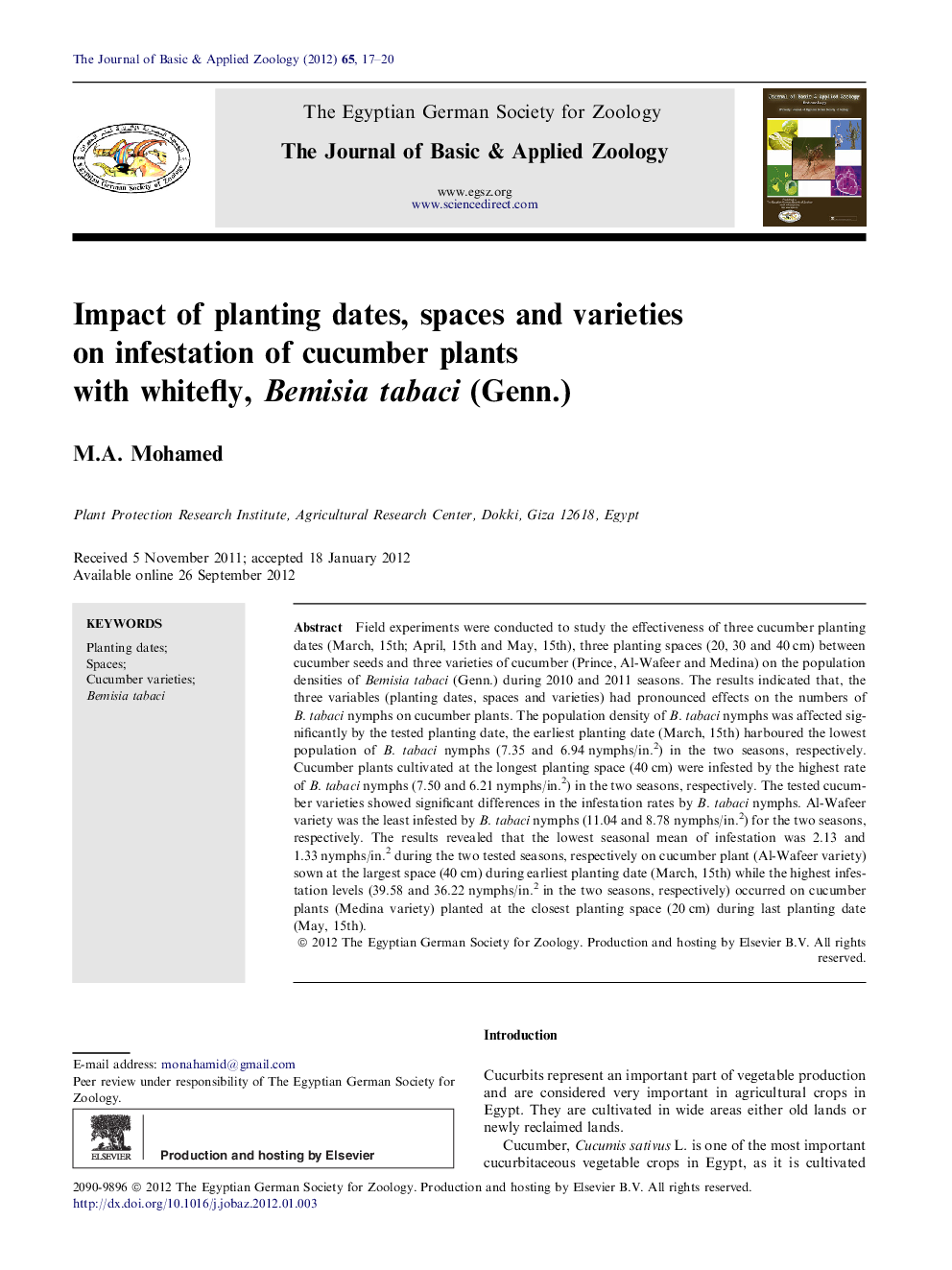| Article ID | Journal | Published Year | Pages | File Type |
|---|---|---|---|---|
| 4493526 | The Journal of Basic & Applied Zoology | 2012 | 4 Pages |
Field experiments were conducted to study the effectiveness of three cucumber planting dates (March, 15th; April, 15th and May, 15th), three planting spaces (20, 30 and 40 cm) between cucumber seeds and three varieties of cucumber (Prince, Al-Wafeer and Medina) on the population densities of Bemisia tabaci (Genn.) during 2010 and 2011 seasons. The results indicated that, the three variables (planting dates, spaces and varieties) had pronounced effects on the numbers of B. tabaci nymphs on cucumber plants. The population density of B. tabaci nymphs was affected significantly by the tested planting date, the earliest planting date (March, 15th) harboured the lowest population of B. tabaci nymphs (7.35 and 6.94 nymphs/in.2) in the two seasons, respectively. Cucumber plants cultivated at the longest planting space (40 cm) were infested by the highest rate of B. tabaci nymphs (7.50 and 6.21 nymphs/in.2) in the two seasons, respectively. The tested cucumber varieties showed significant differences in the infestation rates by B. tabaci nymphs. Al-Wafeer variety was the least infested by B. tabaci nymphs (11.04 and 8.78 nymphs/in.2) for the two seasons, respectively. The results revealed that the lowest seasonal mean of infestation was 2.13 and 1.33 nymphs/in.2 during the two tested seasons, respectively on cucumber plant (Al-Wafeer variety) sown at the largest space (40 cm) during earliest planting date (March, 15th) while the highest infestation levels (39.58 and 36.22 nymphs/in.2 in the two seasons, respectively) occurred on cucumber plants (Medina variety) planted at the closest planting space (20 cm) during last planting date (May, 15th).
